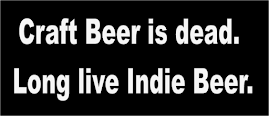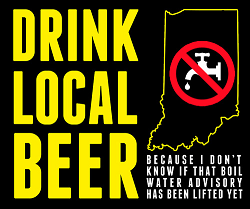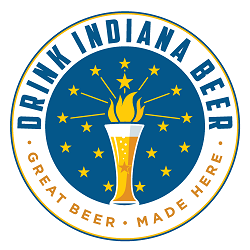A weekly column by Roger A. Baylor.
(Twenty-third in a series chronicling my travel year 1985)
In reliving the past, I’m increasingly aware of how much of it has been lost. This chronicle has obvious gaps, and it’s nobody’s fault but mine. I began the 1985 trip with the best of intentions and kept track of daily events for a while, but these notes began dwindling after the first few weeks, and then disappeared entirely.
Was I lazy, or overly confident about my powers of recollection? Either way, waiting decades to tap them wasn’t the best idea. In retrospect, it would have required a far better writer – not to mention a more rounded and experienced human being – to do justice to what were daily sensations of wonderment and awe.
In the end, what is truly worth remembering about Europe Chapter One is that in the most scrupulously literal of senses, everything about it was an incessant sensory overload. Days were a daze of emotions, amid throngs of people, with a constant accompaniment of languages, cultures and currencies, and an ever-changing kaleidoscope of sights.
No one could absorb all of it.
Each stop on my travel itinerary looked, sounded and smelled different from the last, perhaps never more so than when pole-vaulting by overnight train from the haphazard French-Flemish urban tableau of Brussels to Copenhagen’s orderly northern waterside serenity.
This journey poses another subtle challenge in the retelling. What were my impressions of Copenhagen the first time I went there, before all the other times?
I never thought there’d even be subsequent travels, but they happened, and during these trips Copenhagen became a place I went often. By the early 1990s, it probably would have been easier for me to find my way around Copenhagen than Louisville. This said, here are my first impressions of Denmark’s capital city during two fast-paced days in July of 1985.
Bricks
Sea
Carlsberg beer
Girls
Bicycles
Girls on bicycles
Efficiency
Tuborg beer
Friendliness
Hot dogs
More bricks, more beer, more bikes
Detailed observations were to follow, but make no mistake: Copenhagen was love at first sight.
---
When boarding the train in Brussels, it never once occurred to me that Copenhagen is located on an island, Zealand. To this very day, Zealand is the only part of Denmark I’ve ever visited.
When the train halted around 6:00 a.m. in Puttgarden, Germany, and the conductors began rousing passengers, I groggily started to grab my bag.
“Not necessary,” I was informed in English. In fact, the entire train was about to roll onto a ferry boat with its own tracks built into the hold. Passengers were required to exit the rail cars and walk upstairs, where they could have coffee, beer and breakfast while viewing the 12-mile crossing to Rødby in Denmark.
Following border pleasantries there, we reached Copenhagen in about an hour. As usual, my first order of budget travel business was housekeeping, which began at the train station’s change counter, where a few traveler’s checks from the rapidly depleting stack were swapped for Danish Kroner.
Moments later, some of the Kroner were dropped at a kiosk to purchase coffee and a pastry. It was not a “Danish” as such, although this familiar baked goodie genuinely originated in Denmark before being brought to America.
Next, it was off to a newsstand to buy a strip ticket good on public transportation, followed by a bus ride to an ice skating rink.
Huh? Anyone who ever watched me trying to skate in any fashion should be doing a ferocious double take right about now.
The skating rink beckoned because a man’s got to sleep somewhere, preferably cheaply.
I’ve never been a camping enthusiast, much preferring the view of the campground from the pub’s rear patio, and so with this bargain-basement option eliminated in 1985, bricks and mortar accommodations for quasi-youthful budget travelers were a bottom-line priority.
These came in a variety of forms, ranging from permanent year-round hostels affiliated with the International Youth Hostel Federation (the card was always on standby in my pouch) to others operated independently to varying standards of cleanliness and efficiency (most were quite good and had fewer rules).
In summer, there were seasonal lodgings, generally located in university dorms, and logically coinciding with academic breaks.
Still other creative ways could be found to house peak season tourists existing on the cheap, hence the ice skating rink in Copenhagen, which bore the name Sleep In. Of course, the ice was removed, and the expanse of the floor divided into multi-person pods with bunk beds.
There was a luggage check prior to the official late afternoon opening time. I registered, dropped off my bag and started wandering. It was a sunny summer Sunday, ideal for aimlessness.
The bus took me back into the center of town, and my orientation stroll began at the Rådhuspladsen (City Hall Square), all crimson-bricked and bedecked with advertising signs. From here, the Strøget pedestrian shopping street extended for almost a mile to Kongens Nytorv (King’s New Square), the gateway to Nyhavn (New Harbor).
Just understand that by Danish standards, “new” indicates a construction date in the late 1600s.
A narrow man-made inlet
There were many taverns, some reputed to be off-color, and quite a few people lined the former docks. Many of them were drinking Carlsberg and Tuborg from bottles, while taking great care not to break them – as would have been the societal fear back home.
As I was soon to learn, there were no open container laws in Copenhagen, and drinking in the street was permissible. Canned beer was rare, and the bottles were returnable, with deposits sufficiently hefty at about 20% of the purchase price to encourage care in handling.
---
It was time for a snack, and perched on a sidewalk by a corner of Kongens Nytorv was a pølsevogn, or hot dog stand. This was no mere weenie wagon, but a mobile kitchen – almost a food truck.
As a devotee of the novel “A Confederacy of Dunces,” I imagined the Danish words translating as Paradise Vending, or at the very least, “mogul of meat.” Then again, Nyhavn wasn’t New Orleans, and no pirates were visible.
I subsequently became quite fond of the long and thin red-skinned wieners called rødpølser, and a pølsevogn always seemed to be somewhere near. You might even carry a beer around, and walk to one of them. Such remarkable, civilized institutions in a beer-drinking town. Would a sane person willingly return to Bud Lights and White Castle?
I eventually would, though not just yet.
Temporarily fortified like the fictional Ignatius, I walked back down the Strøget in the opposite direction and kept going toward the train station, ultimately landing at Tivoli Gardens.
Opened in 1843, and one of the oldest “theme” amusements parks in the world, Tivoli was among the inspirations for Disneyland. A vaguely Oriental motif formed the setting for rides (including a huge wooden rollercoaster), games, concerts and various party tricks. Admission was inexpensive, but food and drinks quite pricey. Consequently, people-watching (read: “How could there be this many beautiful women in one place?”) sufficed for me.
By now it was early evening, and time for the day’s solid meal. Heeding the advice of Arthur “$25 A Day” Frommer, I found the Vista Self Service Restaurant at Vesterbrogade 40 opposite the train station, mounted the stairs to the second floor, and experienced throwback dining. The author’s description is classic.
The Vista serves the largest food portions I have ever seen in preparing this book. On a recent summer evening there … a trio of British rock-and-roll types ordered one plate of fried potatoes with fried eggs on top (22 kroner), picked up the unlimited servings of fresh Danish bread that the Vista offers free, split the mound (it looked a foot high) among them, and still weren’t able to finish their meal … be prepared, of course, to encounter large, lively crowds – including every itinerant hippie and aspiring Rolling Stone from across the continent, who seem drawn to the Vista by some ultrasonic homing device, and whose presence adds to the fun.
Aspiring Rolling Stone?
In 1985?
Frommer’s reference may have been dated, but his assessment of the Vista was accurate. It pleases me to report that because trenchermen are born, not made, I finished my $3 plate of potatoes and eggs easily – and did it again the following evening.
Vesterbrogade was a key street. It linked the Rådhuspladsen to Tivoli and the central station’s transit hub, but it was important for another reason, because it led the way west through the Vesterbro neighborhood to a must-see shrine: Carlsberg.
Brewery tours resumed on Monday, and I intended to be there for one of them.
(to be continued)
---
Previously:
The PC: Euro ’85, Part 22 … It's how the tulips were relegated.
The PC: Euro ’85, Part 21 … A long day in Normandy, though not "The Longest Day."
The PC: Euro ’85, Part 20 … War stories, from neutral Ireland to Omaha Beach.
The PC: Euro ’85, Part 18 … Irish history with a musical chaser.
The PC: Euro '85, Part 17 ... A first glimpse of Ireland.
The PC: Euro ’85, Part 16 … Lizard King in the City of Light.
The PC: Euro ’85, Part 15 … The traveler at 55, and a strange interlude.
The PC: We pause Euro '85 to remember the Mathäser Bierstadt in Munich.
The PC: Euro ’85, Part 14 … Beers and breakfast in Munich.
The PC: Euro ’85, Part 13 … Tears of overdue joy at Salzburg's Augustiner.
The PC: Euro ’85, Part 12 … Stefan Zweig and his world of yesterday.
The PC: Euro ’85, Part 11: My Franz Ferdinand obsession takes root.
The PC: Euro ’85, Part 10: Habsburgs, history and sausages in Vienna.
The PC: Euro ’85, Part 9 … Milan, Venice and a farewell to Northern Italy.
The PC: Euro ’85, Part 8 … Pecetto idyll, with a Parisian chaser.
The PC: Euro ’85, Part 7 … An eventful detour to Pecetto.
The PC: Euro ’85, Part 6 … When in Rome, critical mass.
The PC: Euro ’85, Part 5 … From Istanbul to Rome, with Greece in between.
The PC: Euro ’85, Part 4 … With Hassan in Pithion.
The PC: Euro ’85, Part 3 … Growing up in Greece.
The PC: Euro '85, Part 2 ... Hitting the ground crawling in Luxembourg.
The PC: Euro ’85, Part 1 … Where it all began.







No comments:
Post a Comment